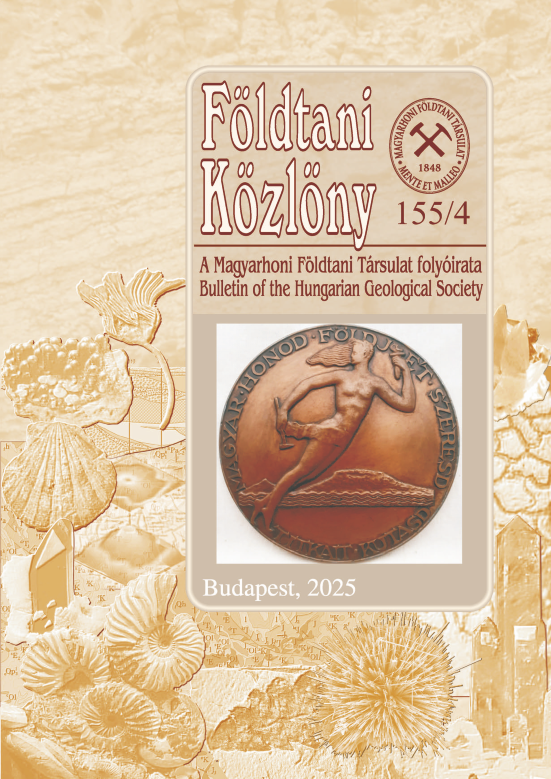A diszeli bauxit
Abstract
In the course of research carried out between 1986 and 1991 in the north-eastern part of the Tapolca Basin (Balaton Uplands, Hungary) — in the Hegyesd and Diszel area — good-quality bauxite bodies and deposits were found. These
bauxite bodies overlie the karstified surface of the Triassic basement (Ederics Limestone Formation, Sédvölgy Dolomite Member).
Four sedimentary cycles can be distinguished in the bauxite deposits. The lowermost corresponds to the Csabpuszta Bauxite Formation of Eocene age. The bauxites of the three upper deposits show features of re-deposition; their material is
derived from the Csabpuszta Bauxite. They belong to the Vöröstó Formation comprising re-deposited bauxitic sediments; these are overlain by Miocene and Pannonian marine or brackish-water beds. Their deposition and re-deposition is in
connection with the Miocene sedimentation. A part of Cycle–II and III is made up of layers regarded as good-quality bauxite, whereas Cycle–IV comprises bauxitic clay and Al-rich clay. Since good-quality bauxite bodies were first discovered in the course of the research work in the Diszel area, they (Cycle–II and III!) have been named as the Vöröstó Formation Diszel Bauxite Member after their locality (GYALOG & BUDAI eds 2004, p. 227). Cycle–IV represents the Vízvöröstó Member of
the Formation. In contrast to the deposition of the Vöröstó Formation ranging from the middle Miocene up to the Pleistocene, the accumulation of the Diszel Bauxite may have occurred in the Middle Miocene. This supposition is on the basis of the oldest overlying strata (i.e. Lajta Limestone Fm, Gyulafirátót Fm and Tinnye Limestone Fm).











